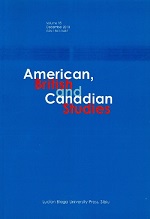Modernism’s Last Post: The Critical Demise of Clement Greenberg’s ‘Post Painterly Abstraction’ Exhibition in Los Angeles
Modernism’s Last Post: The Critical Demise of Clement Greenberg’s ‘Post Painterly Abstraction’ Exhibition in Los Angeles
Author(s): David Brian HowardSubject(s): Cultural Essay, Political Essay, Societal Essay
Published by: Editura Universitatii LUCIAN BLAGA din Sibiu
Keywords: Post Painterly Abstraction; Abstract Expressionism; Los Angeles Museum; Los Angeles County Museum of Art; modernist avant-garde; modernism; modernity
Summary/Abstract: In the post-World War Two North American art world, no art critic wielded greater hegemonic authority than Clement Greenberg. Greenberg’s defense and promotion of Jackson Pollock and the other painters associated with the modernist avant-garde movement known as the Abstract Expressionists vaulted him to a position of critical authority that no individual American critic has ever held before or since. However, even in the 1950s, signs of challenge to Greenberg’s authority were beginning to manifest themselves throughout the art world, especially through the emergence of such aesthetically and socially dissimilar movements as Pop Art that would culminate in the complete rupture with Greenberg’s modernist aesthetic in the later 1960s, especially with the rebellion of postmodernism against the perceived formalist limitations of modernism. Yet narratives of the transition from the moment of Greenberg’s domination to its replacement by postmodernism generally partake in an oddly crude binarism in which a demonized Greenberg is overthrown from his position around 1965, the date of the republication of his notorious essay Modernist Painting, and supplanted by a pluralistic, open, non-hegemonic postmodernism. This paper examines a key exhibition curated by Clement Greenberg for the Los Angeles County Museum in 1964, an exhibit which was intended to travel triumphantly across America and to culminate in a grand opening in New York City symbolizing the reassertion of Greenberg’s new concept of painting after Abstract Expressionism and the reaffirmation of his status as the chief arbiter of modern art taste. A more complex historical analysis of this key exhibition and its organization helps to destabilize the binary assertions of both modernism and its postmodern detractors.
Journal: American, British and Canadian Studies
- Issue Year: 2010
- Issue No: 15
- Page Range: 26-46
- Page Count: 21
- Language: English
- Content File-PDF

